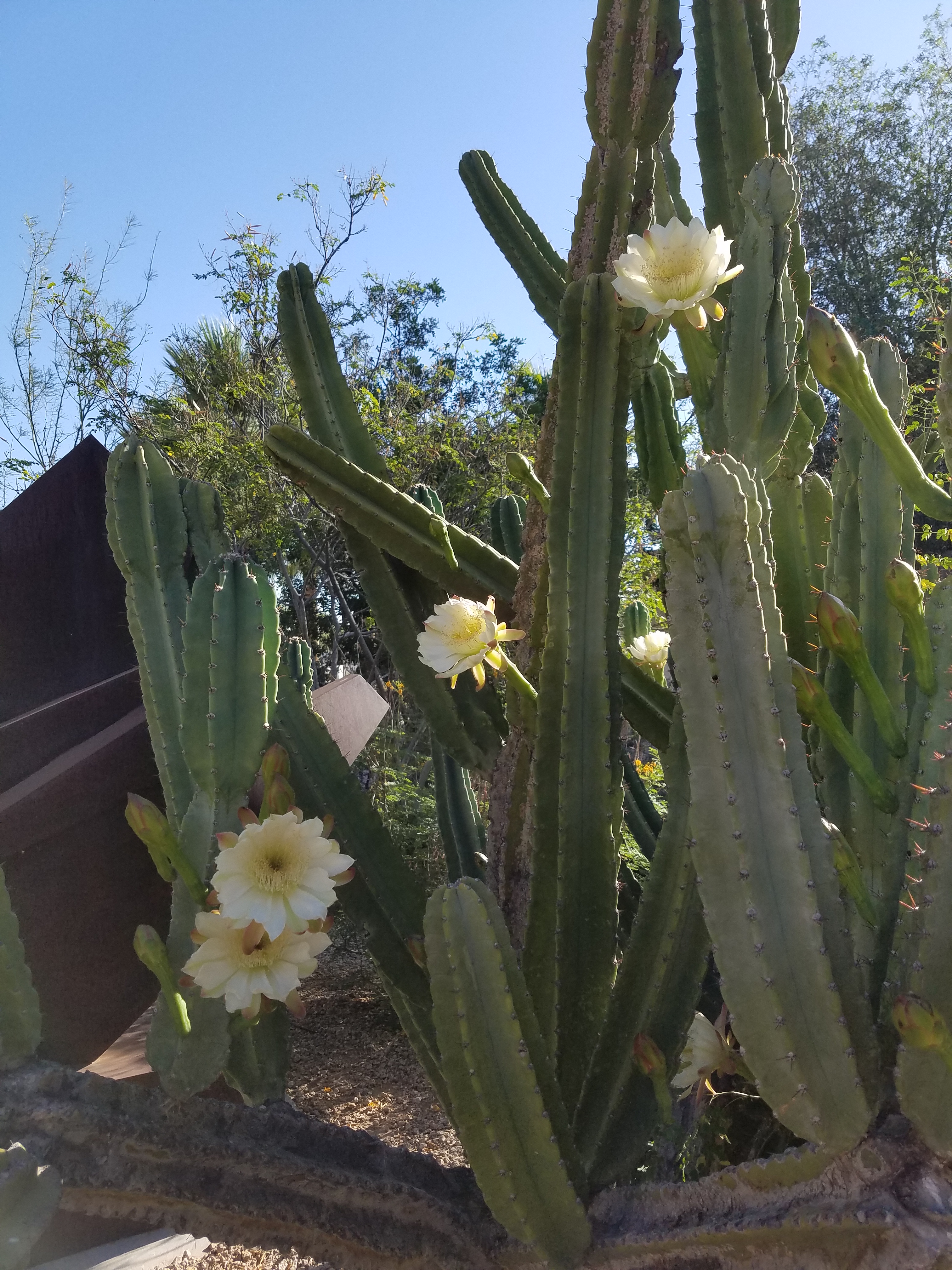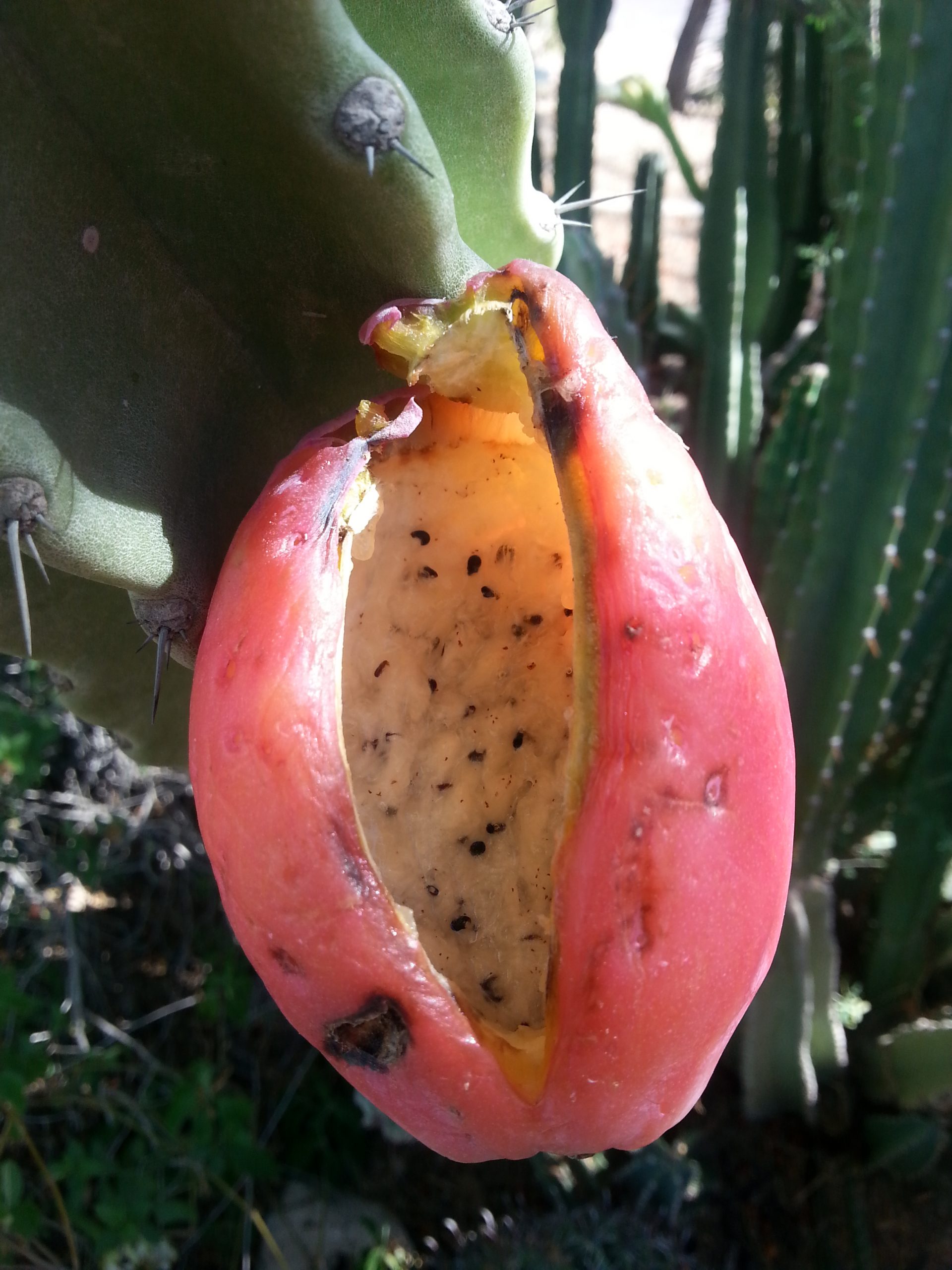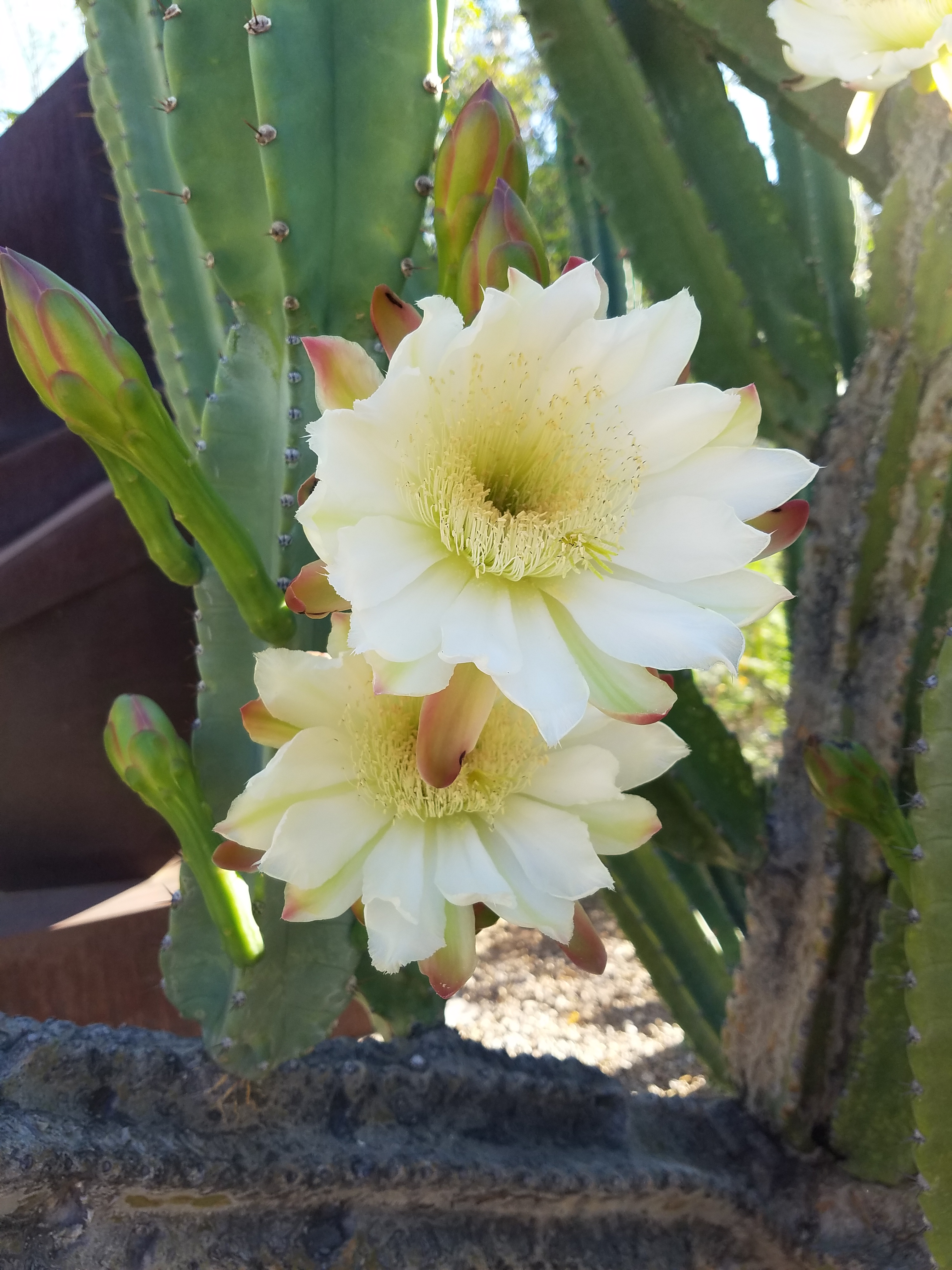Cereus cacti are nighttime showstoppers that are not shy about strutting their blooms.

The two Cereus species highlighted, repandus and hildmannuamus, are so similar it’s challenging to differentiate between them. Like most cacti, this garden giant sits unassuming in the landscape, happy to take in full sun with minimal water. In late spring however, large white showy flowers will open at night.
Caution: If you have one of these beauties in your desert landscape, people may gather to behold the magical cactus flowers. Some people say the cactus even preen under the attention. Well maybe not… but if Cereus had an inner dialogue, I bet they would be pleased with the attention.

Though these cacti flowers open at night, they stay open long enough for day-time pollinators and people to enjoy the spectacle during the morning hours. Even after the flowers fade, this upright columnar cactus offers an architectural focal point to desert landscapes. They grow slowly, but if given time, they can reach over 20-ft high and almost as wide. Make sure to give this plant plenty of room to grown and shine in your landscape. Native to South America, Cereus is frost tolerant and sun-loving, so it is well acclimated to the low desert.
Cereus cacti are sometimes called the Peruvian Apple Cactus due to its large pink-colored fruit. On the inside, the fruit looks like a kiwi mixed with dragon fruit and has a mild, sweet taste, packed with great nutrients. If you want to try one, you will have to get to them before the wildlife!
As with most cacti, Cereus need well-drained soils and occasional watering, if needed, in the summer. Pruning is not required but can be done to remove rubbing arms or to control the plant’s size. This cactus propagates easily, so if pruning, feel free to gift callused cuttings to family or friends who would love to have their own blooming beauty. The best time to plant cactus is in the fall or early spring so it has time to get established before summer.
You can see this cactus and hundreds of other species of desert-adapted plants at the Glendale Xeriscape Demonstration Garden that surrounds the Glendale Main Library at 5959 W. Brown St. Glendale, AZ 85302.
Did you know that up to 70 percent of water use is outdoors? That’s why we love desert plants and feature them each month. Find even more beautiful plants on our Arizona Low-Water-Use Plants page, and visit our page on Choosing and Planting Low Water-Use Plants for tips on plant selection and how to plant properly. Also, be sure to read through all of our featured Plant of the Month blogs!
Three hand-picked articles to read next:
- Plant of the Month: Cactus Flowers Color the Desert Landscape
- Plant of the Month: How Do Those Desert Plants Survive?
- Take a Walk on the Wild Side and Garden for Wildlife
Victoria Caster is a water conservation specialist with the City of Glendale Water Conservation and Sustainable Living Division, one of 20 Water – Use It Wisely partners to offer water-saving advice and programs.


